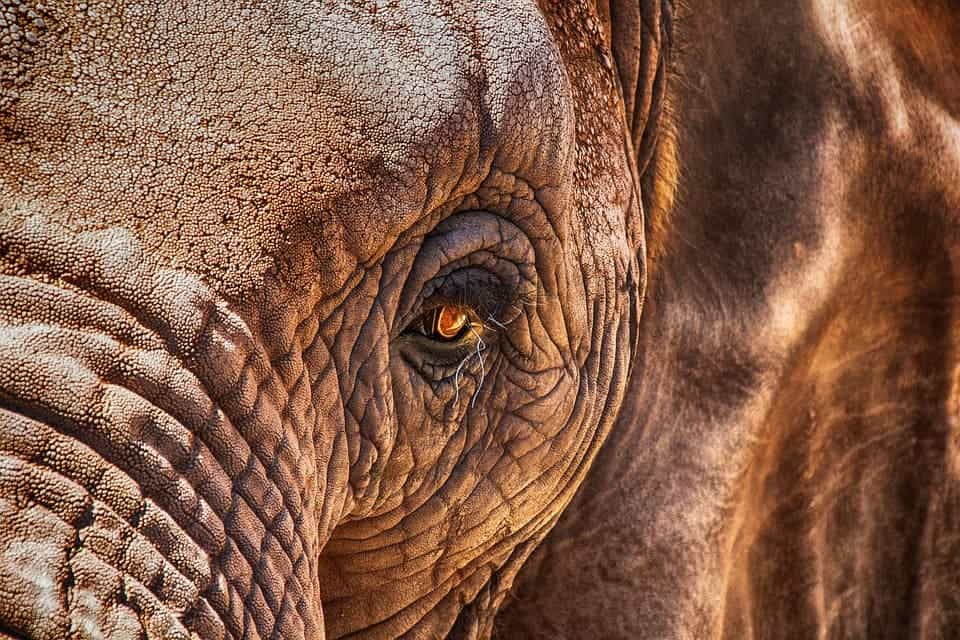The skin of African elephants has is covered in a cracking pattern that resembles damaged asphalt, dry mud in the sun, or Earth’s polar landscape. This pattern helps the elephant retain water on its surface and cool off during hot days in the savanna. Now, Swiss researchers have determined that the pattern isn’t created by shrinking of the skin (as some have suspected) but rather to a genuine fracture of the elephant’s outermost layer of the skin.

Unlike humans, the African elephant doesn’t have sweat or sebum glands. This means it can’t keep its skin moist and flexible all by itself, nor can it cool off, which can make things very difficult for an elephant living in a dry and warm habitat. Luckily, the animal has evolved a clever solution: its wrinkled skin traps water and mud which both cools the elephant by evaporation and also serves to ward off parasites.
The applied mud doesn’t fall off easily because the skin is sculptured by a fine pattern of millions of channels that allow the spread and retention of 5 to 10 times more water than a flat surface.
An interdisciplinary team of researchers led by Michel Milinkovitch, a professor at the Department of Genetics and Evolution at the Université de Genève, now reports that the African elephant’s skin channels are cracks caused by the local bending stress of the epidermis. Three leading factors are responsible for this effect: hyper-keratinized and shedding deficient skin that grows on a lattice of millimetric elevations.
The researchers showed through computer simulations that the bending stress accumulates in between different levels of skin elevation as the skin thickens until cracks form, rejecting the ‘cracking by shrinking’ hypothesis
Mechanical instabilities like cracks in the pavement are not that common in living things. Previously, Milinkovitch’s lab showed that the crocodile’s pattern of scales forms through skin folding, a dynamic that is analogous to the cracking of drying mud. Now, the Swiss researchers have shown that not only does the African elephant skin feature channels that look like cracks, but that they are truly physical cracks of the keratinized epidermis.

Strikingly, the morphology o the African elephant’s skin is very similar to that of humans affected by ichthyosis vulgaris — a genetic disorder that is present in 1 in 250 people, and which is responsible for dry, scaly skin. Future studies that might confirm the molecular and cell biology analogy could lead to new treatments for this pathology.
“This correspondence would also demonstrate that similar mutations that occurred independently in the evolutionary lineages of humans and elephants turned out to be unfavourable in the former and adaptive in the latter” says Michel Milinkovitch.
The findings appeared in the journal Nature Communications.


